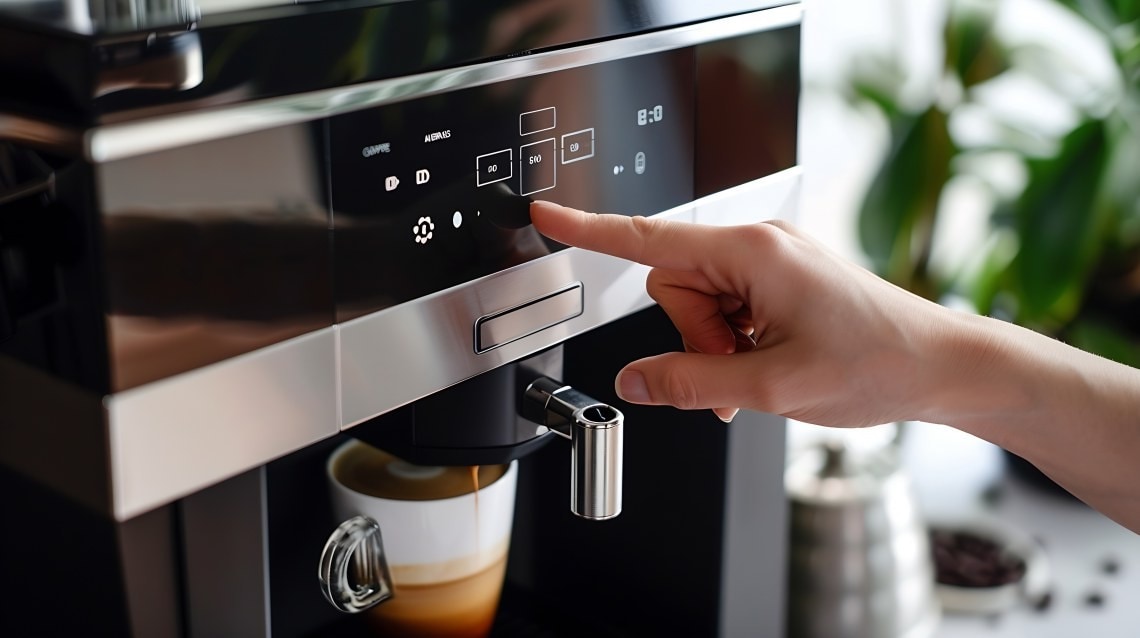Brewing Intelligence: Detecting Coffee Types (and Fakes!) With Machine Learning on Microchip MCUs
What if your coffee machine could sniff out whether you’re brewing a bold French roast, a fruity Ethiopian blend—or even a counterfeit coffee bean? Read this post to find out how we built a working prototype with ML, advanced sensors and our low-power microcontrollers.

Smelling the Future of Embedded AI
What if your coffee machine could sniff out whether you’re brewing a bold French roast, a fruity Ethiopian blend—or even a counterfeit coffee bean? With machine learning (ML), advanced sensors and Microchip's low-power embedded platforms, this futuristic idea is already brewing.
We built a working prototype using the PIC32CX-BZ451 microcontroller and the Bosch BME688 gas sensor, all powered by the MPLAB® Machine Learning Development Suite. The result? A fully embedded, wireless-capable system that can classify coffee aromas in real time—even flagging imposters.
Want to try it yourself? The full design files, data and source code are available on our GitHub project page.
A Fun Project With Serious Implications
While this started as a hobby project to identify coffee types based on aroma, the same technology translates directly to real-world needs in:
- Food and beverage authenticity
- Pharmaceutical and luxury goods tamper detection
- Supply chain integrity
- Air quality monitoring
- Predictive maintenance
If a product emits a signature gas, we can detect it—with tiny, ultra-efficient ML models running entirely on-device.
Hardware at the Heart
This project runs on a compact yet powerful Microchip solution, ideal for edge AI and remote sensing:
Microchip PIC32CX-BZ451
- Arm® Cortex®-M4F core with wireless connectivity (Bluetooth LE and Zigbee)
- Low power design, perfect for IoT and always-on sensing
- Adequate RAM/Flash for small ML models
- Fully integrated with the MPLAB ML Development Suite for seamless training and deployment
Bosch BME688 4-in-1 Environmental Sensor
- Detects VOCs/VSCs and others via gas resistance (ideal for aroma classification)
- Also measures humidity, temperature and pressure
- Low power, small form factor—ideal for compact embedded applications
For this use case, temperature and pressure were discarded, as they remained nearly constant and provided low classification value.
We focused on:
- Gas resistance
- Humidity
These features gave us excellent separation between different coffee types—and even between authentic and knockoff beans.
Building the Machine Learning Model
We used the MPLAB® Machine Learning Development Suite to build, evaluate and deploy our model. No manual coding or tuning was required, thanks to a fully integrated AutoML pipeline.
Step-by-step workflow:
- Data Collection
Brewed several types of coffee (and a few “fake” samples), while logging VOCs and humidity. - Feature Selection
Focused only on humidity and gas resistance, due to their high variability and signal quality. - Signal Analysis
Verified stability, repeatability and separation for the chosen inputs. - AutoML Pipeline
- Used the GUI to train and compare models automatically
- No need for ML expertise—just select and evaluate
- Split data into training, validation and test sets
- Fast iterations and visual feedback made tuning simple
- Deployment
The final trained model was exported directly into optimized C code and compiled into the PIC32CX-BZ451 firmware.
Final Model Stats:
- Inference Time: <0.300 ms
- Model Size: <1500 B
- Stack Usage: ~1200 B
- Classification Accuracy: >99% on test samples
- Deployment Footprint: Minimal memory and power overhead
Low Power by Design
Our wireless MCUs like the PIC32CX-BZ451 are engineered for industry-leading low power consumption, making them ideal for:
- Portable gas detection
- Battery-powered IoT nodes
- Always-on, event-driven classification
Power-saving features include:
- Sleep modes with fast wake-up
- Peripheral-level clock gating
- Efficient radio and MCU coordination
- Smart event system and DMA
This ensures long battery life without sacrificing performance—essential for embedded sensing in remote or mobile environments.
Real-World Use Cases Beyond Coffee
The possibilities go far beyond the coffee pot:
- Spoilage Detection – Monitor freshness of meat, produce or dairy
- Tamper Detection – Flag abnormal chemical signatures in sealed packages
- Air Quality Sensing – Detect harmful VOCs in homes, factories or vehicles
- Material Authentication – Identify “fake” goods via subtle aroma profiles
- Wearable Safety Devices – Alert users to gas leaks or poor ventilation
All are possible using low-cost sensors, a Microchip MCU and compact ML models that don’t require internet or the cloud.
Built to Last: Microchip Support and Longevity
At Microchip, we stand behind your product from concept through long-term deployment:
- Customer-Driven Obsolescence Policy – Your designs stay viable for decades
- Extensive Documentation and Tools – Helping your teams move fast and build smart
- Global Field Support and Training – We're with you every step of the way
Whether you’re building an experimental prototype or a commercial solution, our ecosystem is designed to scale with you.
A Smarter Cup—and a Smarter Platform
This coffee detection project shows what’s possible when embedded ML meets great hardware and tools. Using the PIC32CX-BZ451, the Bosch BME688 and MPLAB Machine Learning Development Suite, we created a fun, powerful example of intelligence at the edge—without heavy code, cloud processing or large footprints.
From detecting fake beans to authenticating goods, this solution demonstrates how even “just for fun” projects can lead to real-world innovation.
For full implementation details, check out the open-source design on our GitHub repository.
For more information about implementing AI and Machine Learning models into your edge device, please visit our Edge AI web page.